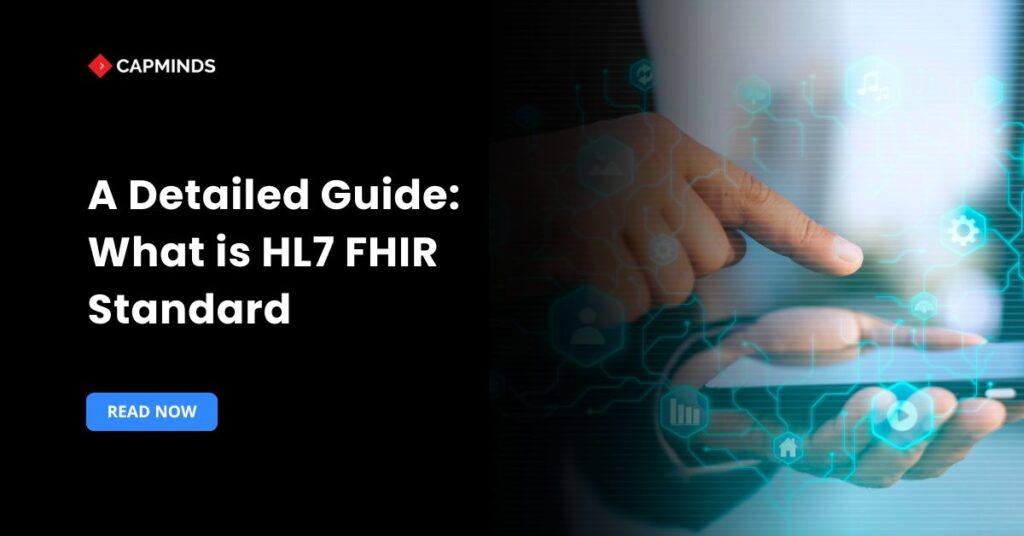HL7 FHIR Interoperability Solutions
Accelerate Healthcare Data Exchange and
Stay TEFCA-Ready with HL7 & FHIR Integration
Connect EHRs, APIs, and legacy systems into a seamless, secure,
and real-time data ecosystem — reduce errors, ensure compliance,
and improve patient care.




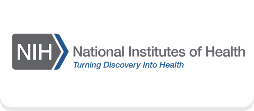
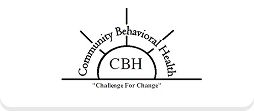


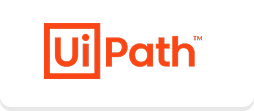



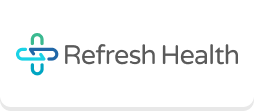

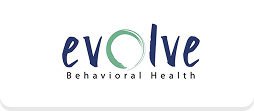






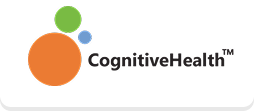






















No more data silos slowing down care!
CapMinds ensures your HL7 FHIR integration services deliver secure, seamless, and real-time connectivity across systems.
Healthcare organizations struggle with data fragmentation, payer APIs, and shifting mandates like TEFCA and USCDI — all while still relying on outdated platforms. At CapMinds, we integrate EHRs, billing, labs, imaging, and third-party APIs into a single, interoperable ecosystem. The result: faster reimbursements, unified patient records, and future-ready networks that align with HIPAA, FHIR, HL7, and TEFCA standards.
How CapMinds Can Help?
0 M +
0 .99 %
0 %
0 +
CapMinds HL7 FHIR Interoperability Services
HL7 Integration Solutions
- Healthcare data still moves largely through HL7 v2/v3 standards — but poorly configured interfaces often lead to message failures, delays, and costly errors.
- CapMinds delivers end-to-end HL7 integration, ensuring every message, from patient admissions to lab results, flows seamlessly between systems.
- We help hospitals and clinics modernize legacy infrastructure, connect EHRs, labs, and billing systems, and achieve true interoperability across their network.
- Patient health record (EHR & EMR) integration
- Clinical document sharing (CCD, CDA, SPL)
- Messaging and UI integration (CCOW, MLM)
- HL7 v2/v3 message parsing and validation
- JSON & XML web services for real-time clinical decision support (CDS)
- Interoperability for labs, imaging, eRx, devices, HIS, PMS & billing systems
Sub-services include:
HL7 FHIR Implementation & Integration
- FHIR is no longer optional — it’s the backbone of modern interoperability.
- We help organizations implement FHIR R4 frameworks that unify fragmented systems under a universal standard.
- By transforming disparate data into standardized FHIR resources, our HL7 integration software enables secure, real-time sharing across EHRs, patient portals, apps, and payers.
- This not only improves care coordination but also prepares providers for nationwide data exchange under TEFCA.
- FHIR resource modeling and mapping for existing datasets
- End-to-end FHIR R4 implementation tailored to your workflows
- Data normalization across EHRs, labs, payers, and apps
- Real-time care coordination through FHIR-enabled APIs
Sub-services include:
FHIR API Development
- Healthcare providers need more than just connectivity — they need secure, standards-based APIs to share and receive the right data at the right time.
- CapMinds develops custom FHIR APIs that extend your EHR, payer, or health app capabilities, while ensuring compliance with CMS and HIPAA mandates.
- Whether you need SMART-on-FHIR apps, bulk data access for analytics, or payer-to-payer pathways, our APIs are built for speed, security, and scalability.
- SMART-on-FHIR app launch & integration
- Payer-to-payer and provider-to-payer API enablement
- Bulk data access (Flat FHIR) for population health and analytics
- Secure role-based access and consent management
Sub-services include:
FHIR Server Implementation
- A robust FHIR server is the engine of modern data exchange.
- At CapMinds, we deploy high-performance FHIR servers that deliver scalability, low-latency data retrieval, and enterprise-grade security.
- Whether you prefer cloud-native (AWS HealthLake, GCP Healthcare API, Azure Health Data Services) or hybrid environments, we design servers that align with your infrastructure, compliance needs, and long-term interoperability strategy.
- Cloud-hosted FHIR servers (AWS HealthLake, GCP Healthcare API, Azure Health Data Services)
- On-premises or hybrid FHIR server deployment
- Secure storage and retrieval of FHIR R4 resources
- Performance tuning and query optimization
Sub-services include:
FHIR Interface Development
- At CapMinds, we specialize in FHIR interface development, ensuring that your clinical, financial, and administrative systems communicate effortlessly.
- By combining the flexibility of FHIR APIs with the reliability of HL7 interface software, we help providers exchange data in real time without delays or manual workarounds.
- Custom FHIR interfaces tailored for EHRs, labs, payers, and health apps
- HL7 ↔ FHIR mapping and transformation pipelines for legacy systems
- Development and deployment on healthcare interface engines (Mirth Connect, Rhapsody, CloverLeaf, SmileCDR, Iguana)
- Integration of HL7 interface software with existing HIS, PMS, and billing platforms
- Real-time monitoring, message validation, and error recovery for high-volume data flows
- TEFCA and USCDI-ready configurations for compliance with nationwide interoperability standards
Sub-services include:
Data Exchange & Interoperability
- True interoperability isn’t just about moving data — it’s about making data usable across every point of care.
- Our HL7 FHIR interoperability solutions bridge HL7 and FHIR workflows to ensure real-time, bi-directional exchange between EHRs, labs, payers, and connected health apps.
- By removing manual workarounds and enabling live synchronization, we help clinicians, administrators, and patients access accurate information whenever they need it.
- HL7 v2 ↔ FHIR transformation pipelines
- Multi-EHR integration (Epic, Cerner, Allscripts, Meditech, OpenEMR)
- Support for TEFCA, USCDI, and CMS interoperability mandates
- Real-time synchronization for care coordination and analytics
Sub-services include:
End-to-End FHIR-Native Product Development
- At CapMinds, we partner with innovators to design and develop complete FHIR-enabled applications and platforms that improve business operations, enhance care coordination, and strengthen patient engagement.
- Healthcare Information Exchanges (HIE)
- Electronic Health Records (EHR) integration and modernization
- Clinical Data Repositories (CDR) for population health and analytics
- Healthcare Information Systems (HIS) and enterprise data management platforms
- Patient and provider portals for secure access to real-time data
- AI-powered telehealth and remote care applications
- Advanced analytics and BI dashboards for decision-making
- Claims, billing, and revenue cycle management solutions powered by FHIR APIs
- Clinical Decision Support systems embedded in EHR workflows
FHIR-Enabled Backend Platforms:
SMART-on-FHIR Applications (Frontend):
FHIR Security & Compliance
- We build privacy-first interoperability frameworks that protect patient data while ensuring audit-readiness.
- From end-to-end encryption to advanced access controls, we design workflows that exceed HIPAA, TEFCA, and CMS compliance standards — giving providers confidence in every transaction.
- HIPAA, TEFCA & CMS compliance assurance
- Encryption & access control (OAuth2, OpenID Connect)
- Audit trails and activity logging
- Secure de-identification for research datasets
Sub-services include:
FHIR Analytics & Reporting
- FHIR data isn’t just for exchange — it’s a powerful foundation for insights.
- CapMinds turns raw FHIR resources into actionable analytics and reports that support better decisions across clinical, financial, and operational workflows.
- From denial trend tracking to population health analytics, our HL7 interface software makes your data work harder — driving measurable improvements in outcomes and efficiency.
- FHIR-native dashboards for clinical & operational KPIs
- Custom denial analytics linking RCM + interoperability
- Predictive trend analysis using normalized datasets
- Population health & outcomes tracking via bulk FHIR exports
Sub-services include:
FHIR Consulting & Advisory
- Every healthcare organization is at a different stage of its interoperability journey.
- That’s why CapMinds offers strategic consulting and advisory services to guide you from planning to execution.
- Whether you’re evaluating interface engines, preparing for TEFCA participation, or upgrading from HL7 to FHIR, we provide the expertise and roadmap you need to succeed.
- Interoperability maturity assessment
- Strategic planning for HL7/FHIR adoption
- Vendor evaluation & interface engine selection (Mirth, Rhapsody, CloverLeaf, SmileCDR, Iguana)
- Training and ongoing support for in-house IT teams
Sub-services include:
Who We Serve?
Key Features of CapMinds HL7 FHIR Solutions
Real-Time Data Exchange
Enable instant HL7 and FHIR message routing between EHRs, payers, labs, and apps. Clinicians access accurate data at the point of care without delays.
FHIR API Gateway
CapMinds provides secure, scalable endpoints for payers, mobile apps, and provider systems. This ensures seamless connectivity that complies with the 21st Century Cures Act mandates.
Advanced Mapping & Transformation
Convert HL7 v2, CCD/CCDA, and FHIR resources bidirectionally with precision. Our intelligent mapping reduces errors and accelerates interoperability projects.
Integrated Audit Trails
Every message exchange is logged with detailed metadata for compliance visibility. Stay TEFCA, HIPAA, and USCDI audit-ready without manual record keeping.
Customizable Dashboards
Track throughput, latency, and error rates in real time with role-based dashboards. Gain actionable insights to optimize workflows and system performance.
Secure Cloud Hosting
Our infrastructure is HIPAA-compliant, SOC 2 certified, and designed for scalability. You get reliable, high-performance hosting without compromising on data security.
Fix Broken Data Flows. Stay TEFCA-Ready.
Book your free HL7/FHIR integration audit and streamline EHR, API, and legacy system connectivity.
Why Choose CapMinds as Your HL7 FHIR Partner
Case Study
Title – Enabling Nationwide Data Exchange with HL7/FHIR
Challenge – A multi-site hospital network faced fragmented EHRs, delayed lab results, and compliance risks.
Solution – CapMinds deployed FHIR APIs and Mirth Connect interfaces, linking all systems under one interoperable framework.
Results – Enabling real-time exchange across systems and achieving measurable performance gains:
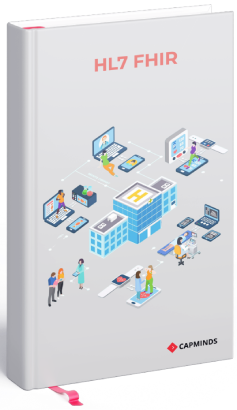
Unlock Real-Time Interoperability and Ensure TEFCA Compliance with HL7 & FHIR Integration
CapMinds is globally recognized for excellence in Healthcare IT security, regulatory compliance, responsive support, and service quality. Trusted by leading healthcare organizations, we uphold the highest standards to safeguard patient data, ensure uninterrupted operations & deliver solutions you can rely on.
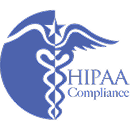



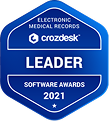


What Our Clients Say
Hear from healthcare leaders who’ve transformed their operations with our service & solution.
Let’s Build Future-Ready Interoperability Together
Consult with our experts and claim your complimentary HL7/FHIR readiness audit today.
- 40% Faster Data Exchange
- 99% Interoperability Accuracy
- 100% TEFCA & HIPAA Compliance
FHIR INTEGRATION ECOSYSTEM
- Proven expertise with HL7 v2/v3, FHIR R4, SMART-on-FHIR, and TEFCA
- Hands-on experience with Mirth Connect, Rhapsody, InterSystems, and cloud FHIR servers
- Seamless integration with Epic, Cerner, Meditech, Athenahealth, and OpenEMR
- Engines/Platforms: Mirth® Connect, Rhapsody/Corepoint, InterSystems Health Connect/IRIS for Health, Redox, Smile Digital Health
- Cloud Stacks: Google Cloud Healthcare API (FHIR/HL7v2/DICOM), Azure Health Data Services (FHIR), AWS HealthLake
- Networks: Epic Nexus QHIN, Health Gorilla, Kno2, KONZA (TEFCA participation & policy)
Implementation Blueprint (60–120 Days, footprint-dependent)
- Week 0–2: Discovery & data flow inventory; TEFCA/QHIN strategy; security review
- Week 3–6: Engine or cloud FHIR deployment; schema/mapping; auth & consent
- Week 7–10: End-to-end test cycles; Bulk/SMART enablement; observability
- Week 11–12+: Cutover with rollback plan; SRE runbooks; KPI tracking
CapMinds Vs The Market:
QHINs / TEFCA Networks
| Competitor | What They Offer | Where CapMinds Adds Value |
|---|---|---|
| Epic Nexus QHIN | Nationwide exchange for the Epic community (1,000+ hospitals, 22,000 clinics). Ideal if you’re already Epic-based. | We connect non-Epic systems to Nexus, ensuring interoperability across your entire network. |
| Health Gorilla (QHIN) | Focus on deduplicated, “AI-ready” data and CMS-aligned initiatives. | We integrate Gorilla feeds into your EHR & analytics stack, operationalizing the data for decision-making. |
| Kno2 & KONZA (QHINs) | Strength in national exchange and public health reporting. | We build the technical and governance plumbing you need to join and exchange securely. |
ENGINES & INTEGRATION PLATFORMS
| Competitor | What They Offer | Where CapMinds Adds Value |
|---|---|---|
| Rhapsody / Corepoint | Long-standing, Best in KLAS integration engines. Strong for enterprise standardization. | We implement and run/optimize with SRE practices, ensuring reliability and scalability. |
| InterSystems (HealthShare / IRIS for Health) | FHIR-enabled stack with high-performance repo & analytics. | We configure FHIR servers, optimize orchestration, and tailor analytics to your workflows. |
| Redox | Unified API with HL7v2 adapters, FHIR sandbox, and strong vendor connectivity. | We handle the last-mile mapping, security, and EHR-side integration to make Redox plug-and-play. |
| Smile Digital Health | FHIR-native platform with consent, MDM, and analytics. | We harden deployments, manage data onboarding, and wire payer/provider apps into workflows. |
| Mirth® Connect | Popular HL7 engine, but as of 2025, 4.6+ is closed-source; 4.5.2 remains the last open-source. | We support both enterprise 4.6+ and stabilized 4.5.2, plus evaluate forks where appropriate. |
FAQ
What is HL7 & FHIR?
HL7 is the family of standards used to exchange healthcare data. FHIR is HL7’s modern, web-friendly standard that uses REST APIs and JSON/XML “resources” (Patient, Encounter, Observation) to move data cleanly between systems. CapMinds builds and secures FHIR APIs so your apps and EHRs talk to each other reliably.
What’s the difference between HL7 and SMART on FHIR?
FHIR defines the data model and API. SMART on FHIR adds a secure way for apps to launch and connect (OAuth 2.0/OpenID Connect), so third-party apps can safely access a patient’s data. CapMinds implements the SMART app launch to keep integrations secure and compliant.
What are the three most common HL7 (v2) message types?
ADT (admit/discharge/transfer), ORM (orders), and ORU (results). These power day-to-day hospital data flows.
What is the most widely used HL7 today?
Inside hospitals, HL7 v2 is still the workhorse. FHIR adoption is growing fast, especially for patient-facing and analytics use cases.
Does HL7 support images?
HL7 can carry small files, but diagnostic images are exchanged with DICOM/DICOMweb in practice. FHIR typically references image locations instead of moving the pixel data itself.
What are HL7 FHIR and DICOM?
FHIR structures and shares clinical data through APIs. DICOM is the imaging standard that stores and transports the actual pictures (and image metadata). They complement each other—FHIR points to studies; DICOM carries the pixels. We link FHIR resources to DICOM/DICOMweb endpoints for seamless imaging workflows.
What are the advantages of FHIR over “classic HL7”?
Faster to build (web standards), easier to test, and more granular (resource-level) than bulky v2/v3 messages. It also supports profiling and an open app ecosystem—great for modular innovation.
We use FHIR profiles/IGs to keep your data consistent across vendors.
How does HL7 FHIR work?
Systems exchange “resources” over REST endpoints using create/read/update/delete and rich searches; JSON is typical. Profiles/Implementation Guides narrow the fields so that two systems agree on format and meaning.
CapMinds publishes clear FHIR conformance and test suites so go-lives run smoothly.
What is HL7’s role in medical imaging?
HL7 v2 handles imaging orders and results between EHR/RIS/PACS. In FHIR, resources like ImagingStudy and DiagnosticReport describe the study and link to DICOM objects.
What are HL7 FHIR standards?
Think layers: the FHIR base specification (resources + REST rules), terminology services (ValueSets/CodeSystems), and Implementation Guides (e.g., US Core) that define exactly which fields and codes to use.
CapMinds maps your data to the right IGs and code systems to keep exchanges interoperable.

